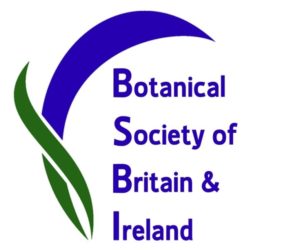Kirkcudbrightshire Botany Group at Criffel – 24th September 2022
Wow, I did wonder if I would make it to the top. And I did, accompanied by Mair and Jan. Worth it though, and hopefully so did the other 40 or so people we met on route, some of whom stopped to ask us what we were up to.
Well, the four old records from two Criffel monads are now joined by 190 others, of 128 different species in three monads – we actually crossed six but recording these is enough to handle in one day! Plus a few casual records in the other monads. The habitats recorded varied from disturbed ground (the car park and paths) and commercial forestry to upland moorland and mire, so there was a good selection of species. But being a granite massif, we weren’t expecting a large number of species or anything unusual.
The car park and the first monad didn’t bring up anything out of the ordinary but gave us a chance to renew acquaintance with many widespread and common species like Heath Cudweed Gnaphalium uliginosum, Bird’s-foot Trefoil Lotus corniculatus, Hemp Nettle Galeopsis bifida and that dreaded and extremely well-armed bramble, later confirmed as Rubus dasyphyllus.
We had a fair crack at the ferns, finding Lady fern Athyrium filis-femina with its distinctive J-shaped sporangia; both Broad Buckler Fern Dryopteris dilatata and Narrow Buckler Fern D. carthusiana; Soft Shield Fern Polystichum setiferum, and Hard Fern Blechnum spicant with its two distinctive fronds, fertile and vegetative. But the highlight was finding two separate clumps of the distinctive Beech Fern Phegopteris connectilis, the reflexed lowest pinnae being the decisive identifier.
Once clear of the forestry, we met moorland of basically Heather Calluna vulagaris, Bell Heather Erica cinerea and various grasses.
But we went straight for the top and lunch – along with many other people around the cairn and trig point! Bright and sunny but cool and the view was spectacular from inland (Windy Standard to Moffat Hills) to the Lakes and the Isle of Man, and Burrow head in VC74.
Lunch over we explored the summit vegetation which consisted of mire and heath with Crowberry Empetrum nigrum with linear leaves and black berries, Cowberry vaccinium vitis-idaea with rounded leaves and no berries, amongst Heather and Cross-leaved Heath Erica tetralix on the higher bits.
Clumps of Green-ribbed Sedge Carex binervis with its dark green leaves which tapered abruptly to a long thin red tip edged the drier areas of the summit. Between these areas were small areas of bog with dense clumps of Deergrass Trichophorum germanicum, the pale fertile but now empty, seed cases on each leaf tip.
Both Common Cotton Grass, Eriophorum angustifolium and Harestail Cotton Grass E. vaginatum and in the lowest levels large areas of Bog Asphodel Narthecium ossifragum at this time of year showing as dark brown seed heads above green scythe-shaped leaves.
It was noticeable that the area around the cairn and along the edge of newly laid path on the slopes supported a number of invasive species which had been transported with the new gravel – amongst them Rosebay Chamerion angustifolium, Spear Thistle Cirsium vulgare, Mouse-ear Chickweed Cerastium fontanum, Annual Meadow Grass Poa annua, other common grasses, Nipplewort Lapsana communis and, rather surprisingly, 4 clumps of Squirrel-tail Fescue Vulpia bromoides.
David Hawker
BSBI county recorder for Kirkcudbrightshire VC73

